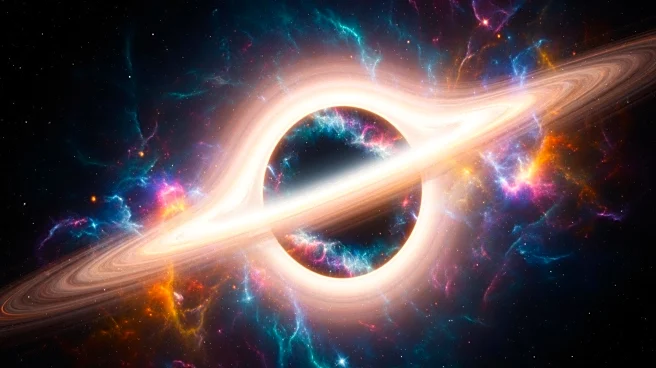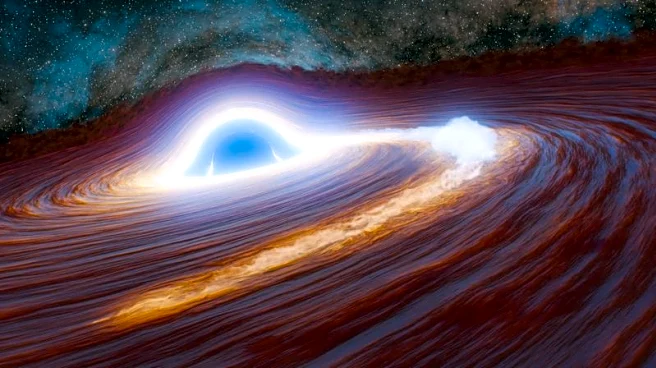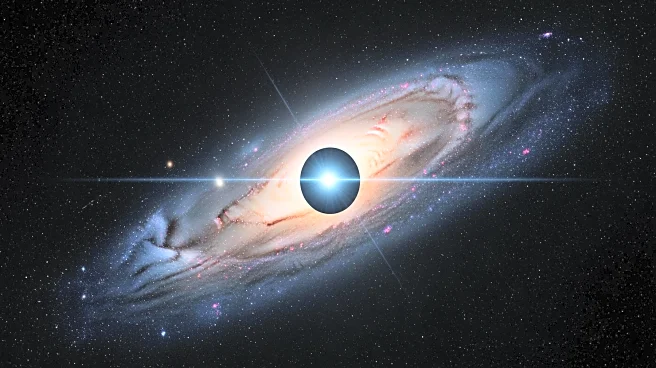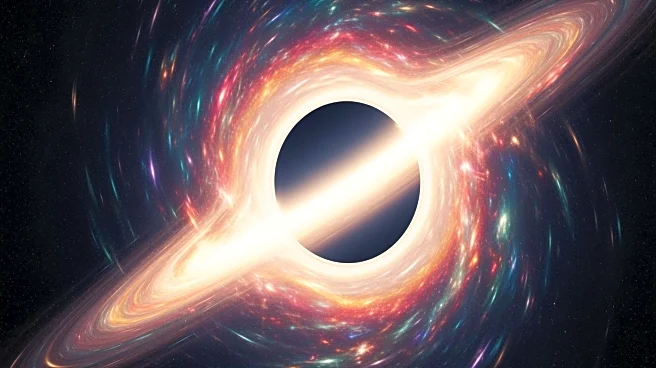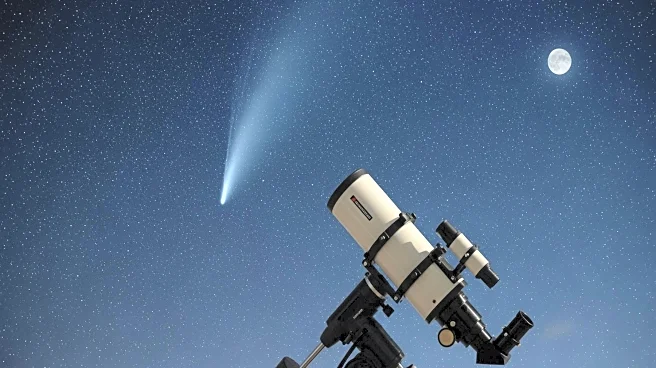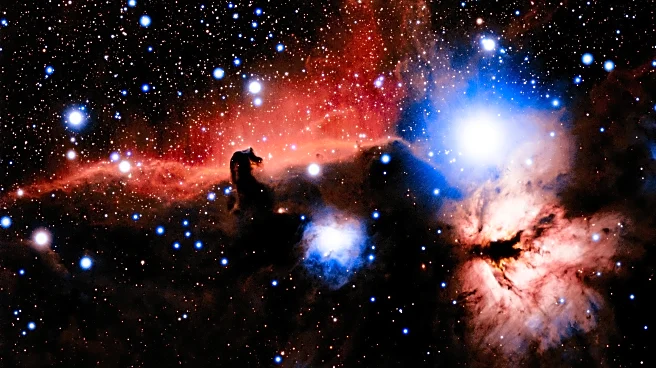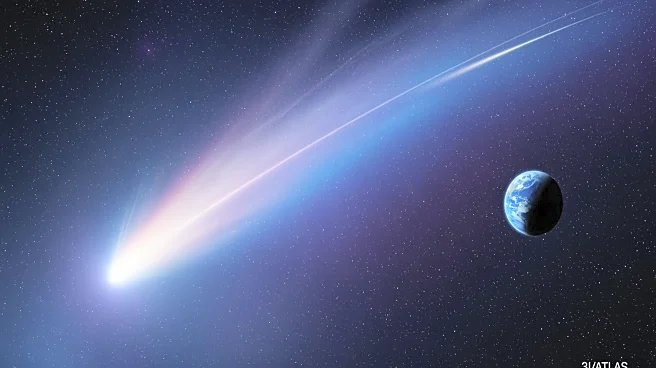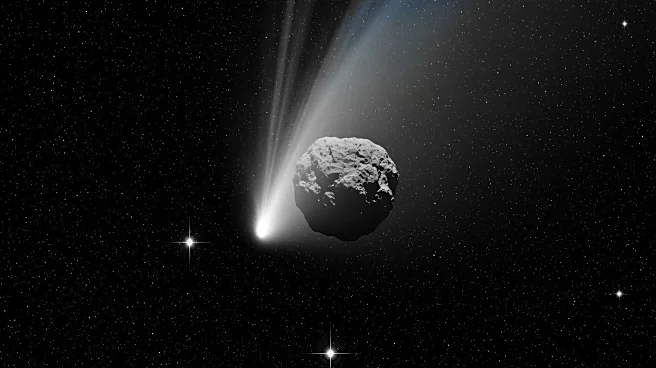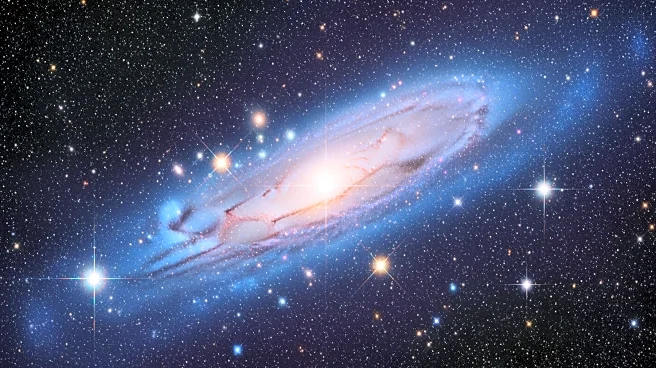What's Happening?
Astronomers at the California Institute of Technology have observed the most energetic flare ever recorded from a supermassive black hole, emitting light equivalent to 10 trillion suns. This event, documented
in Nature Astronomy, was likely triggered when a large star ventured too close to the black hole, resulting in its destruction and subsequent absorption. The black hole, located in a galaxy 11 billion light years away, is approximately 300 million times the mass of the sun. The flare, first detected in 2018, reached peak brightness over three months and is expected to continue for about 11 years.
Why It's Important?
This observation provides a rare opportunity to study the behavior of supermassive black holes and their interactions with surrounding matter. Understanding these phenomena can offer insights into the formation and evolution of galaxies, as well as the fundamental processes that govern the universe. The event also allows scientists to explore the early universe, given the black hole's significant distance from Earth. Such discoveries can enhance our knowledge of cosmic history and the role of black holes in shaping the cosmos.
What's Next?
The ongoing observation of this flare will continue to provide valuable data for astronomers. Researchers will likely focus on analyzing the light emitted during the event to gain further insights into the mechanisms of black hole accretion and the dynamics of stellar destruction. Future studies may also explore the implications of such energetic events on galaxy formation and evolution, potentially leading to new theoretical models.
Beyond the Headlines
The study of this flare highlights the importance of advanced observational technologies and international collaboration in astronomy. It underscores the need for continued investment in telescopes and space missions to explore distant cosmic phenomena. The findings also contribute to the broader understanding of black holes, which remain one of the most enigmatic and intriguing aspects of astrophysics.
